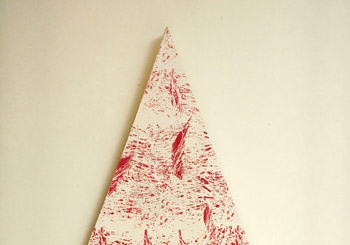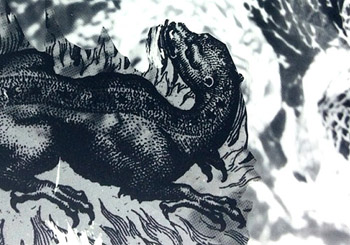PROJECTS
Sleep memories

1993 - 1998
My entire artistic endeavor has been an attempt to reconcile opposites, to bring together my rural past and my urban present, my quest for knowledge and my thirst for the sacred. Sigmund Freud, in The Interpretation of Dreams remarks that “[…] dreams are prominent in bringing the opposites together and presenting them in a single object. Moreover, in dreams, a specific element is often represented by its opposite, in a way that we cannot really tell whether the dream element that is prone to contradiction reveals a positive or a negative content in dream thought”. This procedure is similar to a chemical reaction, since what we end up remembering when we are awake is a general feeling that is the outcome of the processing that took place in the dream, rather than the dream itself. As we re-experience our dreams when awake, we influence both the past and the future by slightly modifying our memories and our expectations.
The roots and the couples

1988-1996
This piece of work was inspired by the poem of Octavio Paz Two Bodies and by a childhood memory regarding the reflection of tree branches on the surface of a round container full of still water. It implements elements of alchemy –the representation of the male and the female forces in nature and their harmonious unification, known as hieros gamos (holy wedding)– that merge with tree patterns in order to appear either as part of the branches or of the roots, functioning as the link that connects everything in life. Such alchemical representations must also allude to the very essence of our humanity: the human being is much like the alembic the alchemists used: it can either refine the elements it contains into gold or distort them into something lesser.
The final stake and the ultimate question are: can the opposites unite in the life and work of a human being as freely as they do in nature? And if yes, how?
Sleeps with the fishes

Installation
1995, Illeana Tounta Contemporary Art Center
I grew up in a rural area, where in early spring the dozens of blossoming trees surrounding my house were providing a perfect flower carpet for me to lie on and watch the flowers still on the trees above, which were about to fall as well. The smell also contributed to the general feeling of experiencing fragility and the loss of any sense of the materiality of the body, just like when we find ourselves in the middle of a slow and peaceful snowfall. Many years later I felt the same sensation by listening to the album Sleeps With the Fishes by Pieter Nooten and the experimental guitarist Michael Brook. That was what inspired this installation, as a testimony of what it is like to re-enter a happy childhood memory and allow it to interact with the present.
The Tower Project

1994
In medieval iconography towers often appear as schematic structures where saints find refuge to pray. Such architectural components are meant to function as higher and more exclusive alternatives to altars and often bear rich ornamental elements, such as paintings and scriptures, which stress even more the symbolic nature of worship. Reaching upwards, towers stand as symbols of the act of prayer itself, becoming figurative extensions of the human being that is always driven towards something greater than him/her. In this piece of work, the image of the tower-altar is invested with organic patterns which are meant to bring prayer forward as a natural force that makes us move always upwards, like the branches of a tree.
Alchemy prints

The central core of my work has always been related to the abstract inner forces of the esoteric life of human beings. Using the grass motif as a compositional element, together with images excerpted from books on alchemy, I attempted to explore the chemistry they produce. Also the process of transferring the images on zinc plates through a chemical procedure, gave me the necessary leverage for a better understanding of the visual qualities of symbolic art, which is depicted in many illustrated books of the history of printing. I was fascinated by the height of the allegoric language achieved through the combination of text and image in these books dated from medieval times and up till the end of the 19th century.






















